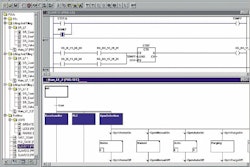Consumers have changed. They are less loyal and more demanding. They are more aware of value, and more inclined to question. The rules of branding have changed, but the brand is far from dead. And leveraging the brand through the power of packaging should be at the heart of your business strategy.
Like it or not, your brand is under constant scrutiny. Marketing efforts aside, a lot of this scrutiny happens at the shelf—namely through packaging. Let’s face it – the competitive space for many consumer products is fierce. And the role of innovative packaging solutions is pushing everyone to “reinvent” the brand to stay relevant in the mind of the consumer. It’s no wonder the role of packaging has become a key driver for brand success.
“Packaging” is one of those terms that gets used loosely, undefined and often prioritized out of context. For the most part, powerful effective packaging is the key to building brand awareness, boosting sales and ultimately your profitability. So pay attention, scrutinize, perfect, and most of all, continue to reinvent your brand through great packaging. Avoid the inevitable—packaging wear-out.
Pre-empting packaging wear-out requires long-term strategic planning. Understanding your category, the needs of your consumer, and the competitive environment holistically are key to rethinking your approach to packaging. Strategic thinking upstream will enable you to plan a long-term strategy for evolving, refreshing, and reinventing your brand downstream. This ensures that both your brand and your packaging stay competitive and fresh in the mind of the consumer.
The factors that signal the need for change or adjustment to your packaging strategy are often a complex mix of market trends, shelf placement, brand positioning, and competitive market influences. Successful activation of your brand message through powerful packaging is as much dependent on consumer awareness of competitive innovation as it is on your brand. And consumers are very astute when it comes to spotting and responding to great packaging; especially packaging that fits a lifestyle and presents a clear advantage. Innovative solutions to life’s little problems are often key.
Kleenex, for example, drives the after-sale benefit factor for its product by de-branding its packaging. It allows consumers to enjoy and discreetly use the product around their home. The brand is able to stay relevant to consumers with graphic, pattern, surface, and seasonal changes to the packaging. These have no inadvertent effect on the brand name or Kleenex’s reputation as the category leader.
Do you know how your consumer selects, purchases, and uses your product? Understanding the rationale and reasoning behind the decision-making process merits investigation. This requires going beyond the store shelf to learn more about how your packaging meets consumer need. Some vital questions need to be asked, researched, and resolved, including such things as time savings, ease of use, convenience, storage, and brand relevance.
In short, your packaging should strive to meet previously unrealized consumer needs.
You need to adopt a smarter approach to packaging. Point-of-purchase displays, insert cards, posters and “PDQ” systems each create additional opportunities. But your package is the only item carried from shelf to checkout and finally to your home. Increasingly, consumers look for packaging that sustains its appeal after the sale.
Microsoft understands this concept well. The computer software maker recognizes that consumers often retain its packaging, so the company designs packaging with storage in mind as a post-purchase benefit.
Additionally, Microsoft’s packaging, particularly for its Apple software business, closely follows the style trends of the computer hardware industry. Understanding the criteria for packaging the brand experience has proven a key factor in maintaining consumer perceptions of Microsoft as the category innovator at retail.
The decision to restage or reinvent your packaging is a big undertaking. What are some indicators driving this decision?
There are a few obvious events, such as when the balance of power changes at the shelf, forecasts falter, or sales decline and it is time to take corrective action.
More relevant to this decision is a second, more probing question. Ask your package development team, “How well do we know our consumer?” In the fast and ever-changing world of the brand, the consumer has become both coveted and distrusted. Coveted for brand loyalty and distrusted for information. But why?
The 1990’s (a truly remarkable era for many brands) delivered an explosion of new processes and methodologies for market research. The hunger for qualitative and quantitative research seemed limitless, and resources grew in response to the increasing demand. At the turn of the millennium, it all changed. Focus groups became unpopular, overly complex research studies became excessively expensive, and marketers began to look for new ways to qualify the requirements and validity for research.
The outcome of this research shakeout is confusing at best. Some marketers push the idea that building an image or aura around a company's products is the only way to keep a brand strong. These marketers believe image is king, and consumers who respond to added value delivered through packaging innovation have little or no value in the research process.
Such thinking is somewhat backward. To be effective, research must address specific concerns and objectives that exist for the brand in the marketplace. To define these objectives, you need to be in touch with your brand and your consumers—and to trust in those who know your brand better than you do.
Combining an effective research program with a creative exploration process enables a flexible and relevant process, where consumers often become the key creative enabler. The research should allow them to think creatively.
The resurgence of private-label brands underscores this point. As occurred during the 1980s, private labels have become more adept at creating focused packaging solutions. They are proving to be the most adept at understanding consumer needs.
How do you better understand the relevance of your brand or packaging? The best way to start is with an audit.
An effective audit should deliver an immediate forward-thinking strategy, with quantified results and a projected return on investment to determine which areas to tackle first. A well-thought-out program identifies inefficiencies, improves time to market, conducts improved materials research and streamlines the overall process. It also penetrates the very fabric of your brand.
At every level, a mix of creative consumer research and market intelligence should play a key role in the audit. To best determine answers to key questions, a host of techniques and methodologies should be used interchangeably. Broadly speaking, separating marketing intelligence from market research is essential, as is knowing how to integrate quantitative and qualitative research into the audit and information analysis. This integrated blend of creative consumer research and market intelligence will ensure that your audit is productive, enlightening, and effective in generating new ideas.
A number of fresh approaches, such as BrandScope’s “Strategic Discovery” process, are taking aim the packaging audit through both qualitative and quantitative research. Your goals in selecting an auditing process are to determine what opportunities exist and how to leverage packaging to better fit the lifestyle of the consumer.
It is critical that the outcome of a packaging audit delivers much more than statistical information. It should create the criteria for innovation and solutions that will strengthen, define, and promote awareness of the opportunities. Through a well-conceived and -considered audit, creative expertise can be guided to create winning packaging solutions that exploit consumer expectations and aspirations. The objectives and recommendations that emerge from the audit should enable you to strengthen your position as a quantifiable category leader and deliver an immediately actionable, forward-thinking strategy.
Contact Dennis Furniss at 773/533-2474 or [email protected].

























